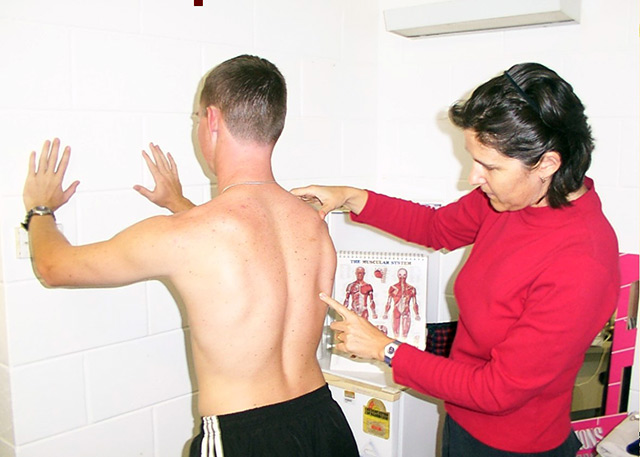Chronic back pain is pain that lasts for three months or longer, and it can make everyday activities difficult. Living with constant pain can lower your quality of life, making it important to find treatments and ways to manage the pain to stay as healthy and active as possible.
 postural assessment
postural assessment Unlike short-term pain that comes from an injury or strain, chronic back pain doesn’t go away easily and can be constant or come and go. It can affect people of all ages, but it’s more common as we get older.
This type of pain can limit what you can do. Simple tasks like walking, sitting, or even sleeping can become painful. People with chronic back pain might find it hard to work, exercise, or take care of their daily needs. Over time, this can lead to frustration, stress, and even depression.
Chronic back pain can also affect your posture, making you more likely to injure other parts of your body. Since the pain doesn’t go away, people often adjust how they move, which can cause more strain on their muscles and joints. In addition, it can disturb sleep, leading to tiredness and a lack of energy.
Question: “What is the cause of chronic back pain?”
Answer: There are many causes of back pain, depending on which structure is injured. However, the strength of the deep stabilisers of the back always plays a very important role.
Without stability of the back, simple movements can re-aggravate your back, even with the original irritation settled for a long time. The fear of hurting your back again can also be a cause of pain by itself, as proven by recent research.
Please ask you physiotherapist about how you can improve or regain control of your movements and return to your normal pain free activities.
Related Pages
- Common Degenerative Spine Conditions — and How They're Treated
- Key Exercises to Strengthen Your Spine - A Guide For Athletes
- Posture, Biomechanics & Their Relationship to Injuries
- Neck Pain - The Role of Neck Pillows
- See treatment for sporting injuries
- Can you hurt your back just by sneezing?
- Stretches
Disclaimer


 Current Events
Current Events